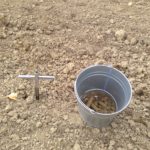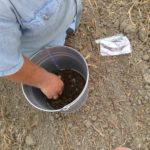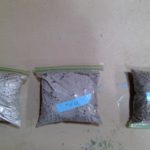By Gabe Ross, Farm Manager

Figuring out what the soil needs to grow crops can be difficult, and often involves more than just guesswork to be successful. Before planting the fall cover crop here at Gallant Farm, I decided to do a soil test.
I want to test the soil before and after the cover crop is grown to see what kind of benefits the cover crop is having on the soil after one season and then do more tests in consecutive seasons to monitor potential improvements. Soil tests allow growers to know exactly what their soil needs without guessing. The tests can include the classic three nutrients that we think of, nitrogen, phosphorous and potassium, but they also test for soil PH and a variety of trace minerals. Once you have these numbers you can amend your soil accordingly. Some soil testing services even make recommendations to customers. Soil tests differ depending on what you are planning to grow, and the soil testing labs will ask this when the samples are sent.
The field I wished to test here at Gallant has two different soil types. Pewamo, which is a silty clay loam and Blount a silt loam soil. I obtained this information from the NRCS web soil survey https://websoilsurvey.sc.egov.usda.gov/App/HomePage.htm.

Because there are two soil types I decided to take two separate tests. I went out with a soil probe and worked my way across the field in a zig zag pattern and placed the samples into a bucket, I then mixed the samples from that area and put about two cups of it into a plastic bag with a label, so I knew where it came from. The zig zagging and mixing gives you a sample that is representative of the whole area. I repeated this step for the other portion of the field. I then dropped the samples off at the Delaware County OSU Extension office where they will be sent to a lab. There is a cost of $25 per sample. For more information visit the Extension Office website, https://delaware.osu.edu/program-areas/master-gardener-volunteers/soil-testing.
This kind of soil testing can be used for orchards, gardens, lawns, flower beds or any other soil area where you wish to grow something. You don’t need a fancy soil probe; a garden spade will suffice. These tests can help you to grow better plants and not waste money on unneeded soil amendments that can contribute excess nutrients in rivers and streams that cause algal blooms and other issues.
Stay tuned to hear the results and updates on the cover crops. Or stop by Gallant Farm, see the crops in person, and feel free to ask me any questions about the process or the crops.








